Leather car seats are a luxurious feature to have in a vehicle. They look good, but they can also be quite comfortable. However, if these seats become scratched, they may no longer look or feel so great. This article will show you how to repair scratched leather car seats using a few simple steps. Read on for more information!
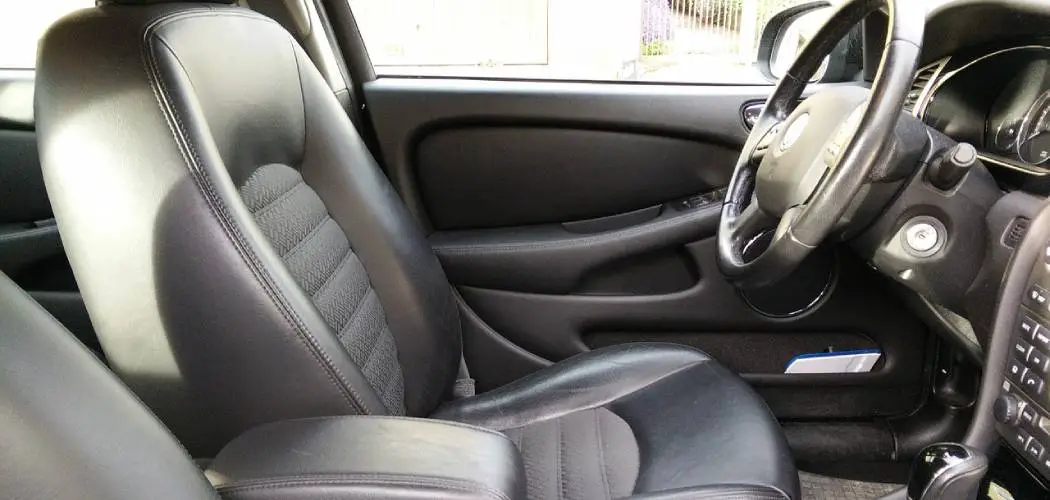
Leather seats are a common luxury option for many vehicles. However, it’s also a very durable material that makes up these seats which help to prolong their lifespan. If your leather car seats have been scratched, it may be time to learn the process of repairing scratched leather car seats.
What Causes Scratches on Leather Car Seats?
Scratches on your leather car seats can happen for several reasons. They can be caused by pets, pocket contents in the seat, furniture, and other potentially abrasive objects that have been slid into or placed on the seat. You may even scratch it yourself while getting out of the car at a low height level. If not cared for properly, minor scratches add up over time and escalate to much larger unsightly marks.
Other causes include leaving soda/water spills unattended, children spilling food or juice drinks in their car seats immediately after they are cleaned, dirt build-up under nails when digging into a locked position, coins if left inside a back pocket when sitting down in the car, etc.
Tools and Materials
- Paper Towel
- Bug & Tar Remover or Other Cleaning Solution (may not need depending on the condition of the seat)
- Masking Tape
- Leather Repairing Cream or Liquid
- Sponge applicator or clean cloth
- Mild detergent (i.e., dishwashing liquid)
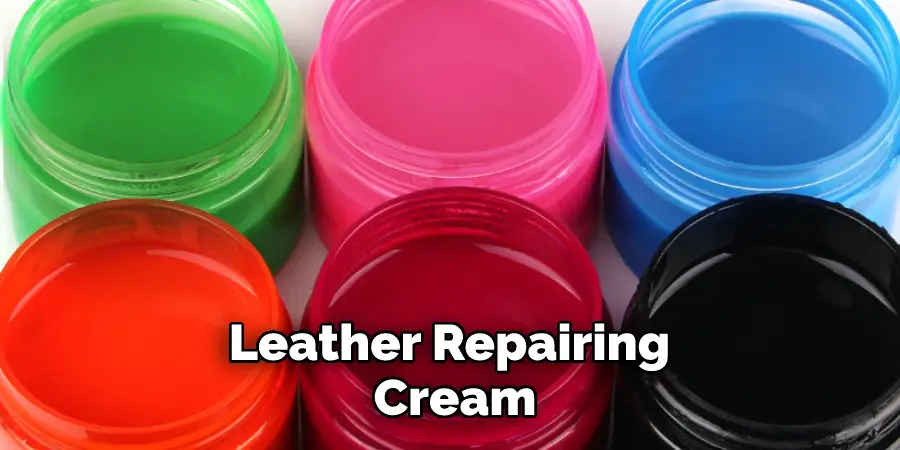
How to Repair Scratched Leather Car Seats Step bt Step Guide
Step 1: Determine Whether or Not You Can Fix the Scratch
If your car’s leather seat is badly scratched, you can’t fix it. You’ll need to take it to a professional. However, if there are only a few scratches on the surface of the front area of your passenger seats and some visible spots on the back area of your driver’s seat, you might be able to solve this problem yourself.
In some cases, you may not even require any tools and products for this solution. Look at car seats from an angle where light reflects them differently from usual views. If deep scratches extend beyond the topmost level of leather grain, stop reading and take your vehicle to a specialist for repair.
Step 2: Prepare Your Seat Surface
You can’t mend scratches if they are in the middle of the seat or within an aperture, where it’s challenging to get at them with products and tools. The seat leather must be clean and dry. If there is any dirt or grime on your car seats, wipe them off using paper towels dampened with cleaning fluid (bug & tar remove). Allow the car seat surfaces to dry completely before you begin working on them.
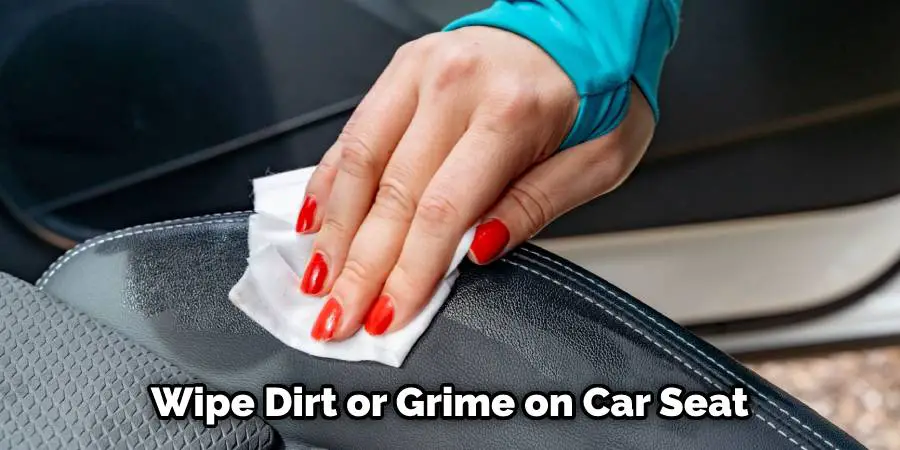
Step 3: Mask the Sides of the Seat
In this step, mask off the sides of your car seats from where you don’t want to work. Next, put masking tape along the edges of your car seat to separate them from untouched areas. If you must go over the edge of your seat, then cut the tape into small strips. After repairing it, you may need to remove it, but that’s much simpler than performing extra work on your car seats.
Step 4: Apply Bug & Tar Remover or Other Cleaning Solution
If you have bug and tar remover or other cleaning agents, apply it on a smooth cloth or sponge applicator and rub it into little healed scratches. If a simple wipe does not remove stubborn dirt particles, let the chemical do its thing for a few minutes before removing it with paper towels. Then, wipe down your entire leather surface (not only on the scratch) to ensure all the types of dirt are gone.
Step 5: Apply Cream or Liquid to the Seat
If you don’t have bug and tar remover, take a piece of cloth and apply cream or liquid to it. Rub the leather until you see the scratch fade away (you can also use your finger for this). Allow some time for the ingredients in the cream to work their way into your car’s leather surface, if necessary.
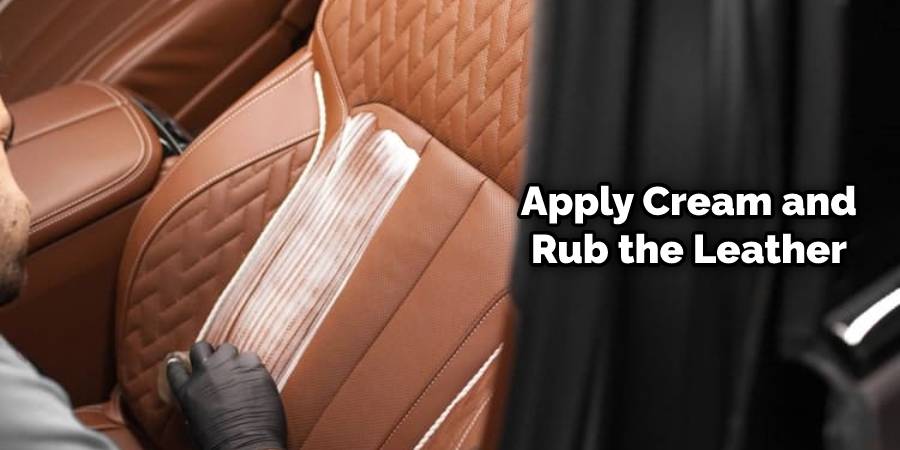
Wipe off any excess product with a clean cloth. How long did you wait on what form of repairing agent you used; check the instructions that came as part of your product for information about how long to let it soak in before continuing your work. This is a crucial step in how to repair scratched leather car seats.
Step 6: Repeat as Needed
You might only have to apply a bit of product for less visible scratches and wipe it off. However, you may need to repeat the above steps several times for more profound or long-standing nicks. How many applications are necessary varies from one scratch to another.
If you feel like your car’s leather seats are perfectly smooth again, stop repeating the process! How often you will have to do this depends on how much damage was done before and what products you used for repairing them. In most cases, though, two applications should be enough to remove all traces of a minor scratch.
Step 7: Remove Masking Tape
Finally, remove the masking tape. Do so carefully so that you don’t pull up any of the leather which has been recently repaired. If there is a marked difference in color between healed and new areas, then place a thin piece of opaque tape over the healthy part to bring them together in appearance after cleaning your car seats.
Step 8: Clean Again
Clean your car once again so that all traces of the chemicals used in the repair have been removed from your car’s surface. You don’t want to use them around people or animals without taking proper safety measures. How exactly you clean your vehicle depends on what products you used for repairing it; read product descriptions and cautions carefully before using one. How often you need to do this also varies from one solution to another – check instructions that came with your product.
Step 9: Polish the Seats
Once you’re done with all of the above, take a piece of cloth and polish your car’s leather seats until they gleam. Of course, how exactly you go about this also depends on what products you used (e.g., creams vs. waxes), but in most cases, it should be fairly easy to do this without harming your car’s upholstery at all!
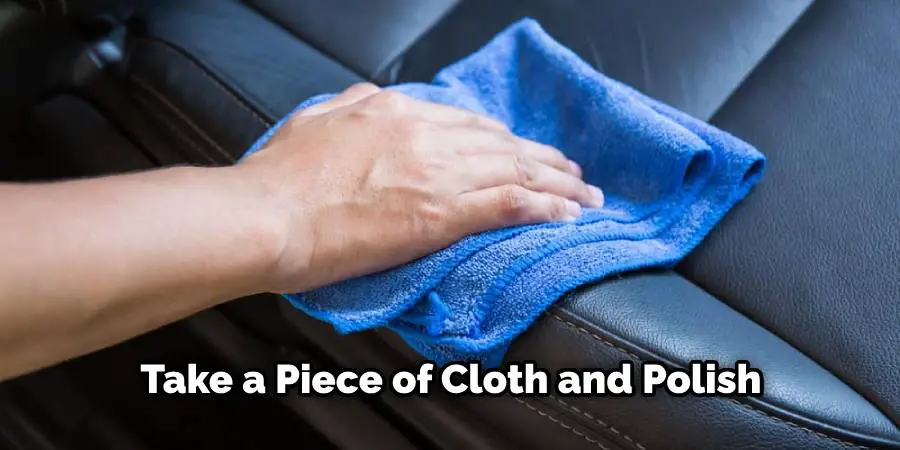
How long it takes to get your car seats looking like new again depends on the severity of the scratches you had, but the chances are good that you can do this in one sitting (provided you purchased enough cream or other solutions).
How often you need to repeat this process after removing surface dirt with cleaning products will depend on how quickly your leather gets dirty. With proper care and maintenance, your upholstery should stay smooth and crack-free for many years! These steps will help in how to repair scratched leather car seats.
Tips and Warnings
Tips:
- If there are just some tiny scuffs that don’t go through the color coat of your leather upholstery, you might be able to get away with using some rubbing alcohol on a cotton swab.
- Be sure to use cotton swabs, so they are absorbent enough not to mar the surface further.
- Some leather upholstery is very delicate (such as the ‘furry’ seat covers) and may need some special care.
- If you can’t get a stain out or leave some mark, it’s probably best to take your car to a professional cleaner with experience with this type of material.
Warnings:
- Never use any furniture polish or leather conditioner on your car’s upholstery; this can worsen the problem.
- Do not try to repair scratched leather upholstery if you are unsure what kind it is.
- Do not use abrasive cleaners or solvents to remove damaged areas.
Frequently Asked Questions
Can You Fix Scratches on Leather Car Seats?
Leather car seats are prone to scratches, which can make them look old and tired. There are a few ways to fix scratches on leather car seats. One way is to use a leather conditioner. Conditioners help restore the surface of the leather, making it less likely to scratch. You can also use a leather polish. Polishes help restore the shine and make the scratches less visible. If you have deep scratches, you may need to replace your car seat.
Is Vaseline Good for Leather?
There is limited research on the effects of Vaseline on leather. Some people who use Vaseline on their leather garments claim that it helps to keep the leather soft and supple, while others say that it does not have any significant effect. Ultimately, it is best to experiment with a small amount of Vaseline on a small area of the leather to see if it makes a difference. If you are not sure if Vaseline is safe for use on your leather garment, be sure to test a small amount first in a hidden area before applying it to larger portions of the garment.
Which Oil is Best for Leather?
The type of oil used will depend on the condition of the leather and the specific needs of the application. However, common oils used for leather applications include mineral oil, linseed oil, tung oil, and waxes. Mineral oil is a low-osmotic (low water) oil that is often used to prepare leather for treatment with a solvent. Linseed oil is a high-osmotic (high water) oil that is used to treat leather with a solvent or dryer. Tung oil is a medium-osmotic (average water) oil that is often used as a finishing or protective coat on leather. Waxes are emulsifiers that help prevent water separation and improve the adhesion of the paint to the leather.
What Can Damage Leather Seats?
Leather seats can be damaged by a variety of factors, including exposure to water, chemicals, and heat. Water can cause the leather to become brittle and crack, while chemicals (such as paint or polish) may damage the surface of the leather and cause it to lose its color. Heat can cause the leather to dry out and shrink, leading to tears and other structural damage. In order to protect your leather seats from damage, it is important to keep them clean and dry, use appropriate coatings and sealants, and avoid exposing them to excessive heat or moisture.
Conclusion
Leather car seats are a luxurious addition to any vehicle. Not only do they add style and comfort, but they can also be a valuable investment. Leather is known for its durability and long-lasting quality, but even the most robust materials can become scratched or damaged over time. Fortunately, there are several ways to repair scratched leather car seats and restore them to their original condition. This article outlined nine steps instructions for repairing scratches on leather car seats. We hope that this information on how to repair scratched leather car seats will help you keep your car looking new for years to come!
You may also like – How to get sunscreen off leather seats

